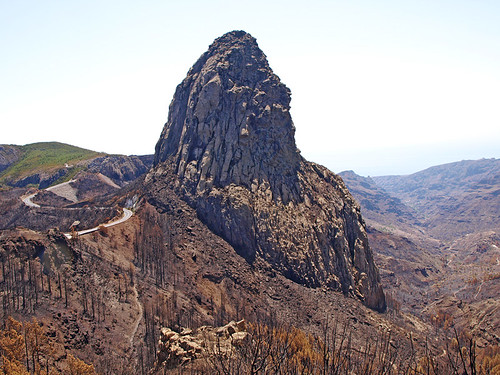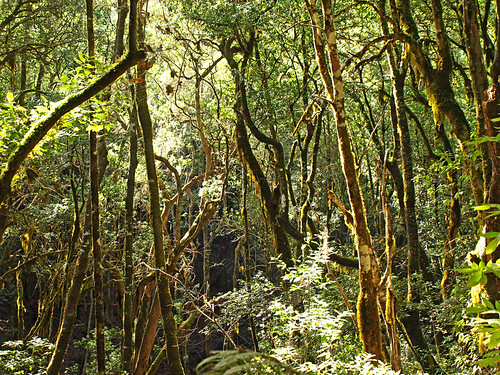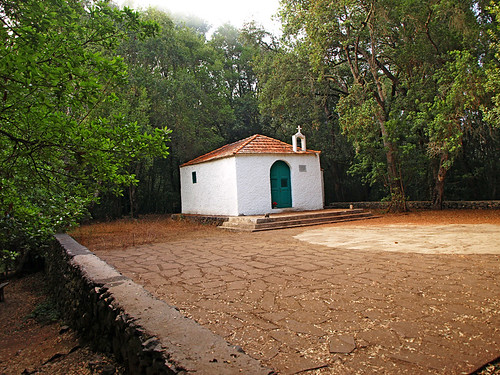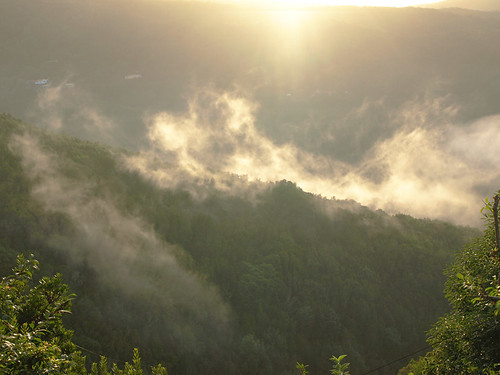The first thing that strikes, arriving at the airport in Playa Santiago on La Gomera as fire-fighters still try to quell the last of the forest fires that have been plaguing the island for weeks, is that everything is normal.
In the small resort next to the airport, favoured mainly by British, holiday life goes on as it always does. For the guests at the luxury hotel on the hill overlooking Playa Santiago, the forest fires that made European news headlines could have happened somewhere else completely.
But as we travel upwards toward the centre of the island (travelling on La Gomera often involves heading inland before navigating outwards again, like negotiating the arms of a star) the stench of old smoke wafts through the car’s open windows.
The landscape around us is burnt ochre and a few scattered trees look skeletal as though their outer layers have been ripped away.
“The fire?” I ask.
“Oh no,” comes the reply from our friend who lives on the edge of Garajonay National park. “It’s summer; it always looks like that around here at this time of year.”
Almost imperceptibly, the naturally thirsty summer look is replaced by real fire damaged terrain. But on these arid slopes of the south, the difference may escape first time visitors’ notice.
Roads from Igualero to Las Hayas and through the Garajonay National Park from La Laguna Grande to Juego de Bolas remain closed, mainly so that fire-fighters can complete their task. As we turn east towards San Sebastián the landscape beside the road transforms from simply being arid to apocalyptic, with a sea of twisted black branches replacing the once dense tree heathers.
The greatest shock is at the popular beauty spot of Roque de Agando. We stood in thick bruma here only a couple of months previously, searching for walking paths through a lush landscape. There’s no problem finding the same paths now, they’ve been left naked and exposed. A forest worker shelters from the unrelenting heat in the shade of some brezals that miraculously escaped the raging onslaught below the huge bullet-shaped rock.
She tells me the paths are open…but they’re not pretty. Then she shrugs, smiles and says “in a few weeks it will be different.”
At that point the sadness at the devastation is replaced by something else, something that is transmitted by the Gomerans themselves – optimism and relief.
A few yards beyond Roque de Agando and the landscape becomes familiar and green again. The trip into San Sebastián is much the same as we remember it and as we head north we’re heartened by a sight that we barely hoped we’d see; the La Gomera of breathtaking and car-hating ravines topped by undulating swathes of emerald forest. The route through Hermigua to the centre of the rainforest is untouched and unspoilt, as is the greatest part of the island and most of the UNESCO World Heritage Site rainforest.
We leave our friend and journey into the forest to map out a new route for Inntravel to replace one that skirted the area destroyed by fires. It’s early evening and the low sun creates a magical golden, dappled route into the old laurisilva. Through the trees we’re teased by glimpses of small hamlets and low clouds hugging the folds of the island’s never-ending ravines; the gaps in the forest never quite wide enough to take a decent photo.
We pass tributary paths leading to lone houses; it’s quicker for some folks in these parts to use these forest trails rather than the road.
Our route takes us to a small hermitage 3 kilometres from one of the worst hit sections of forest. But we only know this because of advice on the island’s official website. There is no visual evidence otherwise. There are other people in this beautiful spot, Gomerans, enjoying the cool of the forest and doing the things they always do.
Our friend arrives shortly after us and we head back into the laurisilva along one of the tributary tracks to emerge at a house, half-hidden in the forest, overlooking Los Aceviños. Its poetic position immediately invokes a surge of envy. We’re greeted by more friends bearing glasses of chilled and potent home-made cider. On La Gomera you never seem far from a friendly face… and some home-brewed alcohol.
As the sky turns lilac and wispy clouds dance around the handful of houses that make up this remote and beautiful valley, they tell us fiery tales about the ridge above them glowing orange in the black night and of being ready to evacuate at a moment’s notice. It’s not done to impress or shock, it’s recounted in a matter of fact way.
For the British press the fires were an excuse for sensationalist headlines designed to sell papers, for the people who live here it’s part of a way of life.
The summer fires have happened before and they will happen again. They might be not so fierce next time, or they may be worse.
Meanwhile La Gomera remains as beautiful and enchanting as ever.








Be the first to comment